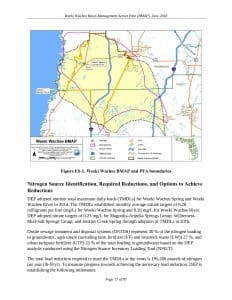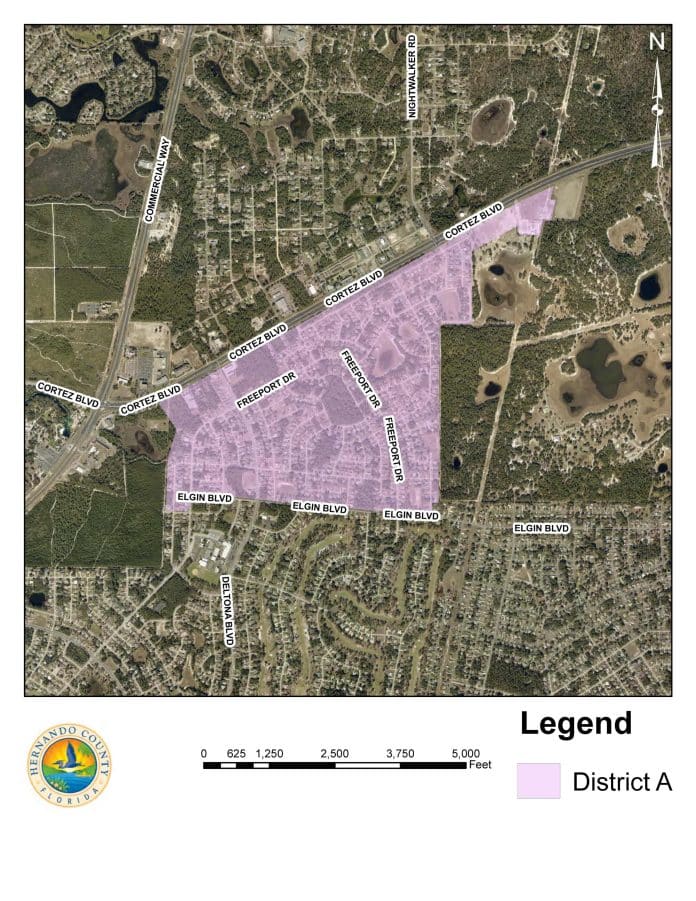At the regular meeting on August 23, 2022, the Board of County Commissioners voted unanimously to pass three items related to the Septic to Sewer Conversion project.
The first was an ordinance that amends language in the County Code of Ordinances (Section 28-238) to clarify the mandatory requirements for connections and bring it into compliance with state statutes. The revision is necessary to obtain state grants to help fund the project.
Utilities Director Gordon Onderonk explained that the new language removes exemptions and requires properties to be converted when the connection becomes available. Property owners will be given a one-year notice of availability.
When connected to the county sewer system, property owners can expect fees starting at $23.22 per month and $5.17 for every 1000 gallons. Onderdonk reported the average sewer bill is $50.00 per month.
The next ordinance establishes an MSBU (Municipal Service Benefit Unit) for the property owners of District A, which is described as “all properties within the unincorporated area of Spring Hill generally located south of Cortez Boulevard, west of Sand Hill Scout Reservation, north of Elgin Boulevard, and east of Commercial Way.”
The cost to the property owner is an estimated $3,600 which can be paid over the course of 10 years. The amount of the MSBU will be determined at a future public hearing, and a notice will be mailed to each affected property owner specifying the amount of the assessment.
District A consists of approximately 800 properties that currently use septic systems. The district will be converted to sewer connections by 2026.
Commissioners unanimously approved State grants that will fund $12.25 million of the project. The county expects to leverage $4,025,000 in ARPA (American Rescue Plan Act) as well. The Hernando County Utilities Department (HCUD) is funding $665,000.
Commissioner Jeff Holcomb commended Onderdonk on securing outside grants. “I want to congratulate you and your staff. It’s been mentioned earlier that this is the state legislature, through the Springs Protection Act mandating this process, and … we’re probably looking at a $35,000 – $36,000 cost to each individual lot owner that we’ve gotten down to $3,600 … I think that the work you’ve done on behalf of our citizens is impressive.”
Another grant approval was for a $2.8 million grant agreement with Tallahassee for a Septic Upgrade Incentive program. This program will provide incentives of $7,500 for owners of existing homes outside of District A, which are within the Priority Focus Area (PFA). This grant will allow property owners to install enhanced nitrogen-reducing septic systems.
Properties in this group are those located west of US Highway 41, south of Centralia Road, north of County Line Road, and just west of a portion of US Highway 19 closest to Weeki Wachee Springs. These properties fall outside the 5-year scope of District A, which is the first phase of a 20-year project.
Onderdonk said that the county will add this information to the county website in the near future.
A third grant approval, which also passed unanimously, is for the Sewer Connection Incentive program. This $250,000 grant applies to homes that the county has identified as having nearby access and already capable of connecting to existing sewer infrastructure. This grant also offers $7,500 to owners within the PFA to make the connection.
The Septic to Sewer project is part of the state-mandated Basin Management Action Plan (BMAP) which seeks to reduce pollutants in waterways statewide. Hernando County’s BMAP concentrates on the land area that directly affects Weeki Wachee Springs, which feeds the Weeki Wachee River.
Onderdonk presented specifics about the reasons for the massive septic-to-sewer conversion project, showing data that suggests rising levels of nitrates measured in the Weeki Wachee River correlate with the population growth of the county since the 1970s.
Recent studies show that most of the nitrate pollution is caused by septic systems (roughly 30%) and fertilizer runoff (roughly 45%). The remainder comes from livestock waste, atmospheric deposition, and wastewater treatment facilities.


